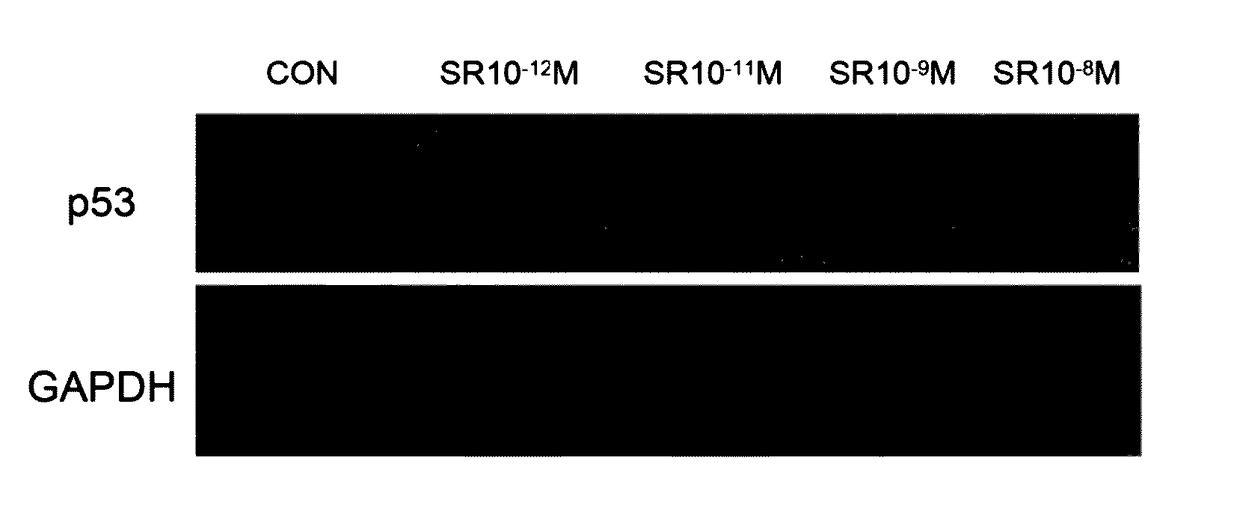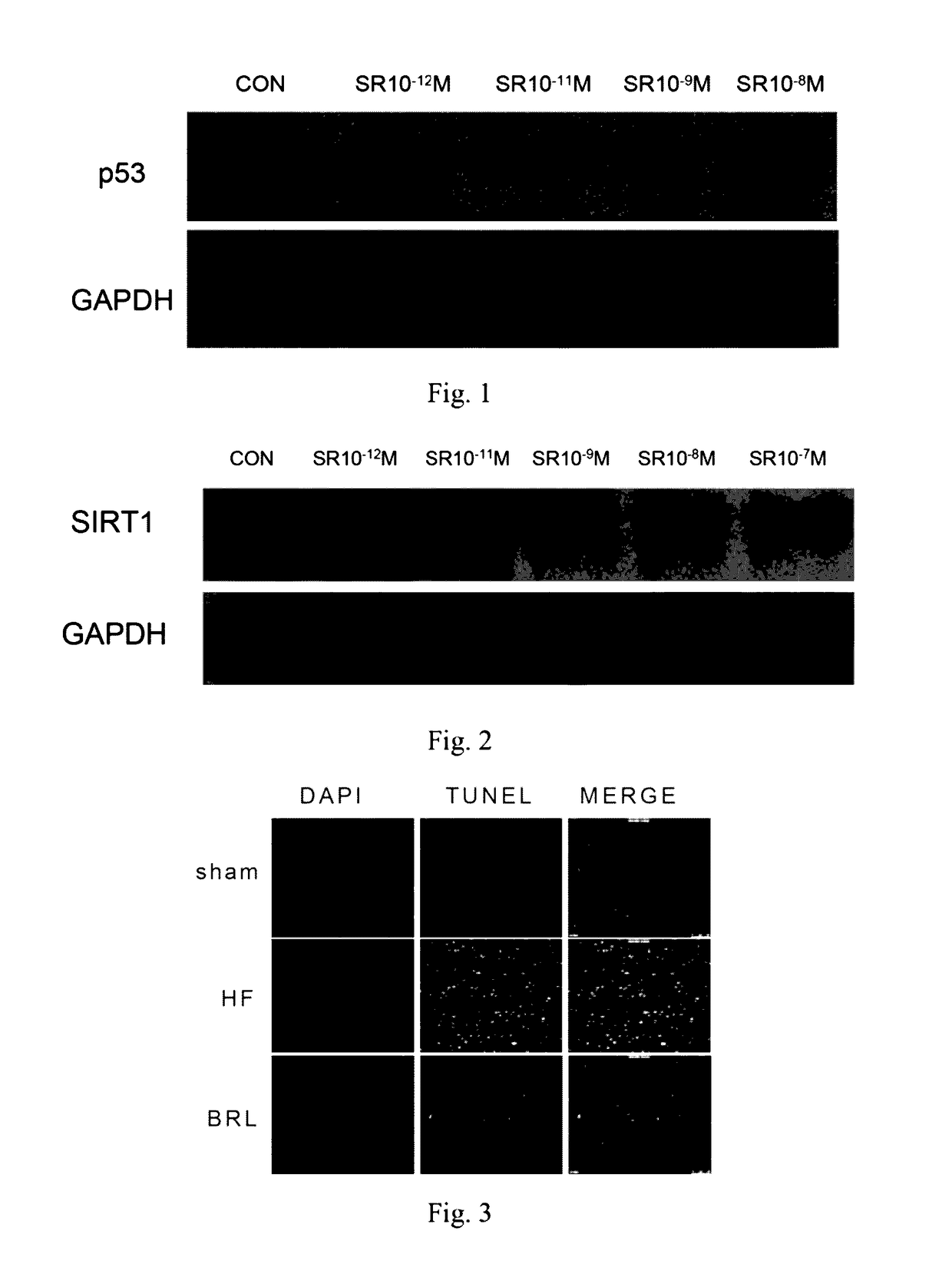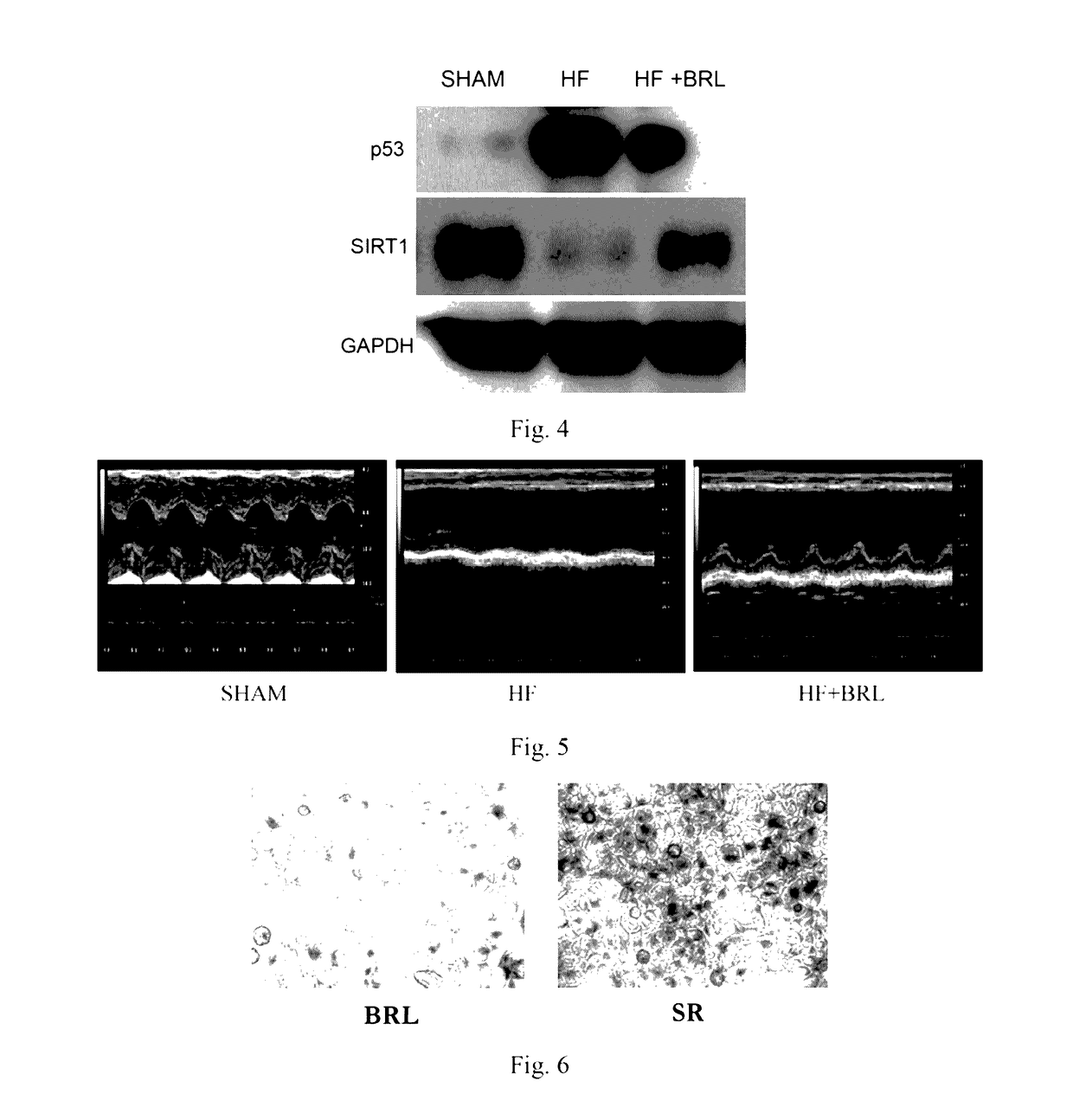Use of adrenergic beta-E-receptor blockers in cancer treatment
a beta3 receptor and adrenergic technology, applied in the field of new, can solve the problems that adrb 3 activating drugs could theoretically be used, and achieve the effects of reducing mitochondrial membrane potential, suppressing voltage-dependent anion channels, and increasing mitophagy
- Summary
- Abstract
- Description
- Claims
- Application Information
AI Technical Summary
Benefits of technology
Problems solved by technology
Method used
Image
Examples
example 1
[0035]MCF-7 cells were treated with SR59230A at different concentrations. After 24 h, the cells were lysed to extract total protein. The protein concentration was determined by BCA method. 10 μg of the protein was used to perform 10% SDS PAGE, and then transferred to a PVDF membrane. The membrane was blocked for 1 h with TBST (10 mmol / L Tris HCl, pH 7.5, 150 mmol / L NaCl, 0.1% Tween 20) containing 4% fat-free milk, and incubated overnight with p53 antibody (1:1000) and SIRT1 antibody (1:1000) at 4° C. The membrane was further incubated with secondary antibodies for 1 h after washing, followed by ECL color development. The same procedure was repeated 3 times. The gray values of protein bands were obtained through Fluorchem 8900 software and the ratio of target band to reference band (GAPDH) was calculated. Results are shown in FIGS. 1 and 2, wherein the expression level of p53 was increased as the increase of SR59230A concentration, while SIRT1 was decreased.
example 2
[0036]In rat myocardial infarction models, activation of the β-3 receptor could increase level of SIRT1 in cardiomyocyte, inhibit expression of p53, improve the cardiac function and achieve anti-apoptosis effect. The myocardial infarction model was created by ligation of anterior descending branch of rat left coronary artery. BRL37344 was intraperitoneally injected at 1 mg / kg / day, and heart B-ultrasonography was performed after 4 weeks. Heart tissue was determined for apoptosis (tunel method) and expression levels of SIRT1 and p53 (western blot). The ratio of left ventricular weight to body weight (LVW / BW) is determined. It can be seen from the results shown in FIGS. 3 to 5, that BRL37344 decreases p53 expression, cardiac cell apoptosis, and value of LVW / BW of heart failure rat, increases SIRT1 expression, alleviate cardiac hypertrophy and improve cardiac function.
example 3
[0037]Blockage of the β-3 receptor could increase level of β-galactosidase in adipose-derived stem cells and promote stem cell aging. BRL37344 and SR59230A were used to treat adipose-derived stem cells of rats each at 10−7M. After 24 h, cells were fixed using paraformaldehyde, and stained and photographed according to the specification of β-Galactosidase Staining Kit. Results were shown in FIG. 6. BRL37344 decreased the level of β-galactosidase in adipose-derived stem cells when compared with SR59230A, indicating agonisting of adrenergic β3 receptors of adipose-derived stem cells achieves anti-aging effect.
PUM
| Property | Measurement | Unit |
|---|---|---|
| pH | aaaaa | aaaaa |
| volume | aaaaa | aaaaa |
| mitochondrial membrane potential | aaaaa | aaaaa |
Abstract
Description
Claims
Application Information
 Login to View More
Login to View More - R&D
- Intellectual Property
- Life Sciences
- Materials
- Tech Scout
- Unparalleled Data Quality
- Higher Quality Content
- 60% Fewer Hallucinations
Browse by: Latest US Patents, China's latest patents, Technical Efficacy Thesaurus, Application Domain, Technology Topic, Popular Technical Reports.
© 2025 PatSnap. All rights reserved.Legal|Privacy policy|Modern Slavery Act Transparency Statement|Sitemap|About US| Contact US: help@patsnap.com



